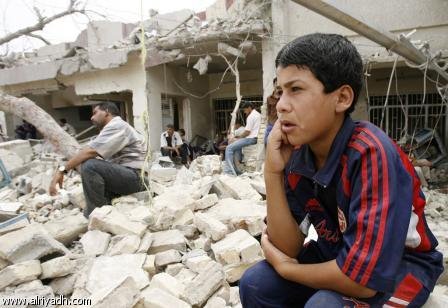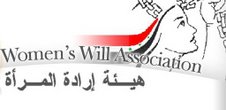An elderly Iraqi refugee sleeps rough on the streets of Amman, Jordan. Even if Iraqis manage to flee the violence in their own country, they often face hardships in neighbouring nations
One of the dreams of tailor Ahmed Khalid al-Timimi was to make a school uniform for his oldest daughter so she could boast about it to her peers at school. However, his dream was dashed when he and his family were displaced as a result of the country's spiralling sectarian violence. He is now jobless and his daughter has not been able to go to school. "Leave or else have your wife and daughters decapitated," al-Timimi, a 39-year-old Shia father of two girls, recalled the note stuck to his door in Baghdad’s southern Sunni-dominated suburb of Dora.According to an Iraqi Red Crescent Society (IRCS) report, 142,260 families - about 1,037,615 individuals - have become internally displaced persons (IDPs) since 22 February 2006, when a revered Shia shrine in Samarra, 60 miles north of Baghdad, was bombed by what many believe was a Sunni extremist group. Sectarian violence has increased sharply since that time.
"Currently, the number of displaced people is increasing at an average of 80,000-100,000 a month," said the IRCS report dated 5 July and relating to the period from February 2006 to 30 June 2007. The IRCS, the only humanitarian relief agency on the ground, said the nearly 67 percent increase in the number of displaced families since last January "is intensifying an already unstable situation". "By the end of June 2007 there were over one million IDPs, of whom 37.5 percent were children under 12; 32.8 percent were women and 29.7 percent were men," the 25-page report said. Topping the list of areas with most IDPs was the capital Baghdad with 41,969 families; second was Mosul Province with 15,063 families; and third was Salaheddin Province, about 200km north of Baghdad, with 12,781. "What have I done in my life to lose my house and job and see my dream of building a happy family fade away? Who should be blamed for all our misery?" asked al-Timimi, who lives with a relative in a tiny house in one of Baghdad's Shia neighbourhoods.
Displaced Iraqis
Some 142,260 families - about 1,037,615 individuals - have become internally displaced persons (IDPs) since 22 February 2006 Of these, 37.5 percent are children under 12; 32.8 percent are women and 29.7 percent are men. The number of displaced people is increasing at an average of 80,000-100,000 a month. Baghdad has the highest humber of IDPs with 41,969 families; Mosul Province is second with 15,063 families; and Salaheddin Province third with 12,781.
Source: Iraqi Red Crescent Society (IRCS)
In addition to recording changes in the country’s demography, the IRCS report also mentioned the hardships which displaced families faced daily. Al-Timimi is now drowning in debt as he has to buy medicines for his wife who has cardiac problems and for his asthmatic youngest daughter. "I need at least 250,000 Iraqi dinars (about US$200) each month to ensure their treatment… From time to time, I sell cigarettes and soft drinks in the street,” he said. "The education sector has been negatively affected by displaced families in different governorates as schools saw a significant increase in the number of students per class. There is also a shortage of educational materials and stationery," the report said. IDPs have limited access to health care. This was having a serious effect especially on women and children: "Pregnant women, infants and children are unable to get the required medical care and illegal abortions have become the norm," the report said. Many IDPs also had psychological problems and some sought refuge with armed groups "as they [the armed groups] represented the true authority of the land for them... Rape, armed gangs, theft and drug addiction was common among IDPs", it said.
The IRCS said the large number of Iraqis in Syria, Jordan, Egypt, Lebanon and Iran faced financial, medical and accommodation problems and received little help from aid agencies. “Without permission to work and with depleted savings, many Iraqis who have fled abroad, often overqualified, accept low-paid illegal work… the overall picture is that of a human tragedy unprecedented in Iraq's history," the report concluded. sm/ar/cb





